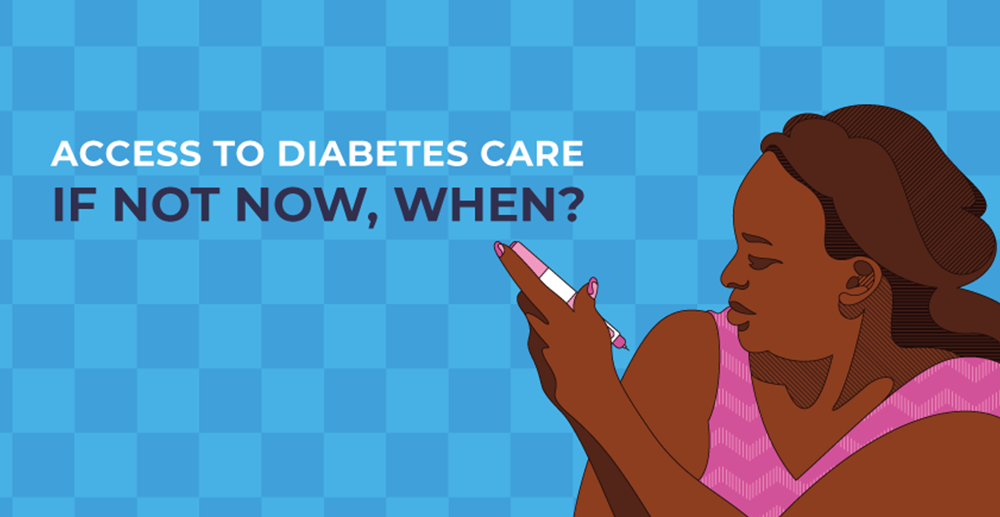I recently began my clinical rounds as part of my school curriculum. It has been an enlightening experience thus far. Throughout the past few weeks, I have interacted with patients in the endocrinology ward; a majority of whom were diabetic (A telltale sign of the frequency of diabetes diagnosis). A few patient interactions struck a chord with me; a young girl in her early twenties and a man in his mid-thirties. We can call then Lily and James.
Lily was reserved and very compassionate. When I first met her, she was helping an elderly lady get comfortable in her bed and gave her a sip of water. Upon taking her medical history, she revealed she was recently diagnosed with Type 1 diabetes. The physicians were still trying to tackle her blood sugar levels. Nevertheless, she was perky and optimistic about leaving the hospital soon.
James, a type 2 diabetes patient, was an astute fellow. He came to the hospital as soon as he saw he deduced that his blood sugar levels were critically high. Unlike Lily, James had a few years of experience with his illness. He was always abreast with any developments in his health. His nutrition plan was well adjusted, he also was very keen on any advice the residents and doctors would give him. He was diligent with taking his blood sugar measurement and was compliant with his medication regimen. As a greenhorn student, I was fascinated by how well informed he was.
This brings me to the crux of the matter. How can we get patients like Lily to the point where they are in control and up to date with their health like James? Furthermore, how can we minimize cases like James, where complications arise? Can we reduce the rates of diabetes diagnosis and nip them in the bud early on?
Thankfully we have some solutions to these questions.
Food: Equipping patients with knowledge on the use of the glycemic index. Such knowledge can go a long way to know which food types and meals will cause a spike in blood sugar levels and which are healthier alternatives. The glycemic index is essential in the dose titration; with emphasis on those patients taking mealtime insulin. Carbonated and sweetened beverages are also a no-no. A balanced diet comprising of enough vegetables, fats, proteins and carbohydrates which are low to moderate on the glycemic index are essential in improving the quality of life for diabetic patients. It can also go a long way in preventing type 2 diabetes in those who are predisposed either genetically or due to lifestyle habits.
Exercise: Regular physical activity improves the bodies’ ability to utilize insulin. Studies have shown a correlation between increased waist circumference and obesity with Type 2 diabetes. It is postulated there is a component of insulin resistance. It is of essence to monitor your blood sugar levels at the beginning, during and at the end of your routine. It is also good to be aware of physical manifestations of sugar level drops. Keep well hydrated and prepared for spikes or drops during workouts.
Medication: Pharmacists and medical practitioners alike should provide adequate counselling at the start and during treatment on appropriate dosing, administration and storage of the medication like insulin and oral glycemic agents. If there’s a change in regimen, the practitioner should be keen on potential drug and food interactions. In the event of illness and stress, advise the patient to seek medical attention if necessary. Adhering to their medication regimen and making adjustments to dosing accounting for stress impact on blood sugar levels.
Pharmaceutical industries and manufacturers play an essential role in enhancing accessibility. Lowering the costs of production by sourcing raw materials in-country can make drugs accessible. Increasing the number of manufacturers within the country so that there is not a drug deficit. Currently, in Kenya, the main local company manufacturing of diabetic medicines is Cosmos Pharmaceuticals. A new set of companies are venturing into this space such as Dawa Life Sciences and Square pharmaceuticals which is set to establish production in a couple of months. Hopefully, they will also improve the unmet gap in medication supply.
Physicians, Hospital administrators and Pharmacists are encouraged to prescribe low-cost insulin and generic alternatives; alleviating the burden economically and psychologically on patients hence managing stress levels, two birds with one stone.
Patient compliance: Multiple factors are in play when it comes to medication adherence. These include;
Socioeconomic factors: Those of lower or unstable economic status have compromised adherence due to inadequate access to cost-effective medication or inability to acquire therapy.
Healthcare-related factors: Whether there is follow up or how the disease is managed in inpatient conditions.
Medical condition-related factors: Concomitant infection or conditions can impair a patient ability to follow up with their daily regimen.
Therapy-related factors: Complex prescriptions can affect compliance while side effects and interactions can deter a patient.
Patient-related factors: The patients understanding of their condition, their expectation in regards to improvement and perception of their symptoms abating or worsening.
Patient adherence can be tackled at multiple levels; socio-economically making the drugs accessible as stated earlier. Socioeconomic counselling at the health care provider level as well to get the best fit. Consistent medical follow-ups with the patient can mitigate the negative healthcare-related factors as well as patient-related factors. Building a good patient-doctor relationship can aid the patient in opening up on why they are having trouble with adherence. Furthermore, follow up meetings can create a conducive space for brainstorming with the patient; on how to integrate drug administration into their daily routine. For example, such as linking daily activities like brushing teeth with taking blood sugar reading. Follow up sessions can also monitor the patient’s response clinically to different regimens as well as build on their understanding of their condition.
Through this, complications that arise from diabetes such as heart attack, stroke, kidney infections, and lower-limb amputations can be prevented.
We all know that prevention is better than cure. It begins with awareness of the risk factors:
- Having pre-diabetes
- Being overweight
- Being 45 years or older
- Having a parent, brother, or sister with type 2 diabetes
- Are physically active less than three times a week
- Having a history of gestational diabetes or given birth to a baby who weighed more than 9 pounds
- Are African American, Hispanic/Latino American, American Indian, or Alaska Native
After knowing your risk for diabetes, you can prevent or delay onset by incorporating lifestyle changes such as eating a healthy diet and regular physical activity.
It is never too late to take steps to a better future; individually or as a community to improve access to care and prevention.
Article written by Melissa Buttuk, BPharm. Student and Project Associate – Ryculture Health and Social Innovation.

